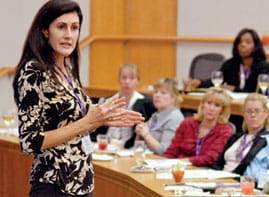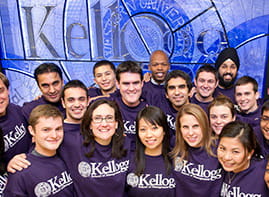Thoroughly revised for 2010, the second edition of <i>Kellogg on Marketing</i> offers the latest insights from the discipline’s top thinkers
8/14/2010 - Updated editions of business books usually have a bit of fresh material and perhaps one or two new chapters. But because marketing has changed so much in the last 10 years, Kellogg faculty needed to take a thorough approach to their seminal work,
Kellogg on Marketing.
 |
| The second edition of Kellogg on Marketing (Wiley), due out in September, includes significantly revised chapters on the core concepts of marketing, plus eight new chapters that cover emerging contemporary issues. |
“Even though there are basic concepts and principles that endure, the examples can get a bit dated,” says
Alice Tybout, co-editor of the book and the Harold T. Martin Professor of Marketing. “We also wanted to address a number of contemporary issues. People who bought
Kellogg on Marketing in the first place will also want to buy the second edition, because there's so much that's new.”
The second edition of
Kellogg on Marketing (Wiley), due out in September, includes significantly revised chapters on the core concepts of marketing, plus eight new chapters that cover emerging contemporary issues. Such an overhaul is necessary considering the trends of the last 10 years, which include the shortening of product life-cycles and the growing number of ways to reach consumers.
Sections I and II explore the development and implementation of a marketing strategy, covering everything from brand positioning to pricing to sales-force development. While these two sections have been substantially updated, the third section, “Perspectives on Contemporary Issues in Marketing,” contains all new material. New topics address how to market profitably to consumers at the “
bottom of the pyramid,” how to best leverage new social media tools and how to manage product assortment.
Kellogg on Marketing can be used as a text for an introductory marketing class, but it's a far cry from a dry textbook. With 25 different contributors — ranging from S.C. Johnson & Son Professor of International Marketing
Philip Kotler, to former Dean
Dipak C. Jain, to graduates of Kellogg’s MBA and doctoral programs — the book blends cutting-edge academic research with practical thinking and real-world examples.
“This is the Kellogg perspective on marketing, rather than just a basic marketing book,” says
Bobby Calder, department chair and the Charles H. Kellstadt Professor of Marketing. “But it's also a statement of thought leadership. Kellogg's Marketing Department has historically had a very strong reputation, and with that comes the obligation to lead the field.”
Although students and industry newcomers can benefit from the lessons in
Kellogg on Marketing, the book also serves as an important resource for seasoned professionals — and not just marketing professionals.
“Much of this book reflects the recognition that the lines are blurring between marketing and other functions,” Tybout says. “We deal with the relationship between marketing and operations, between marketing and sales, between marketing and overall innovation.
Kellogg on Marketing can help people think through these increasingly blurry lines through a marketing lens.”
|
Contributors to Kellogg on Marketing include:
- Gregory S. Carpenter, the James Farley/Booz Allen Hamilton Professor of Marketing Strategy
- Bobby J. Calder, the Charles H. Kellstadt Professor of Marketing, director of the Center for Cultural Marketing and chair of the Kellogg Marketing Department
- Lisa Fortini-Campbell, lecturer of executive programs
- Alexander Chernev, associate professor of marketing
- Anne T. Coughlan, the John L. and Helen Kellogg Professor of Marketing
- David Gal, assistant professor of marketing
- Shyam Gopinath, Kellogg doctoral student
- Kent Grayson, the Bernice and Leonard H. Lavin Professor
- Dipak C. Jain, former dean, professor of marketing and the Sandy and Morton Goldman Professor of Entrepreneurial Studies
- Richard Kolsky, lecturer of executive programs
- Philip Kotler, the S.C. Johnson & Son Professor of International Marketing
- Lakshman Krishnamurthi, the A. Montgomery Ward Professor of Marketing
- Angela Y. Lee, the Mechthild Esser Nemmers Professor of Marketing
- Derek D. Rucker, associate professor of marketing and the Richard M. Clewett Research Professor
- Brian Sternthal, the Kraft Foods Chair in Marketing
- Alice M. Tybout, the Harold T. Martin Professor of Marketing
- Andris A. Zoltners, the Nemmers Professorship in Marketing
|






